Maverick Life
Maverick Motoring’s Best Of 2012: The Fantastic Five
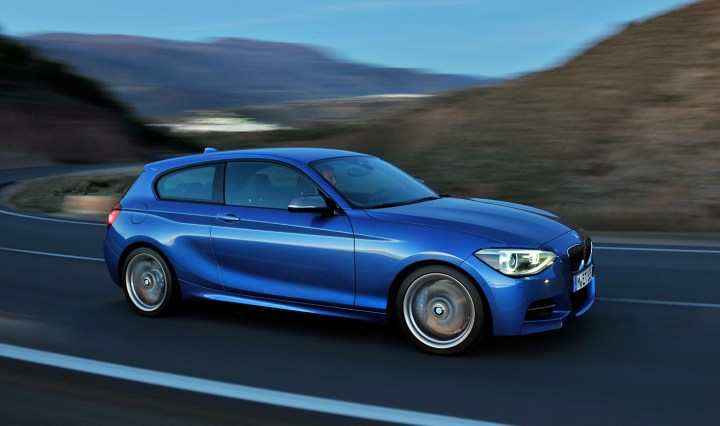
In a year which saw literally hundreds of new vehicles reaching our shores, choosing the cream of the new car crop was never going to be an easy task. Our Fantastic Five selection represents the best of the best – and expresses just how competitive the local motoring landscape really is. By DEON SCHOEMAN.
There’s no doubt that the South African car market is one of the most competitive in the world.
The unique combination of an exhaustive and tempting choice of new models, an almost total lack of safe public transport, a country with vast distances between major centres, and the belief that a flashy car is an icon of success, has created a level of demand that is increasingly at odds with the less than lively South African economy.
Economists paint a gloomy picture, brought into ever sharper focus by slow economic growth, a rising trade deficit, a mining sector in post-Marikana disarray, a groundswell of service delivery protests, exposés of corruption, and a less than steady currency.
And yet, car sales continue to boom, at least in volume terms. Our appetite for the bright and shiny metal of a new vehicle seems insatiable, and the volumes continue to ramp up. By all accounts, 2012 will be remembered as an excellent vehicle sales year, despite the economy.
But because it’s so competitive, and because SA motorists are also among the most demanding (they should be, considering what new cars cost!), the level of sophistication on offer locally is very much at First World levels.
Yes, there are cheaper options from China and India. But for now, the price differential often isn’t big enough to warrant the sacrifice in terms of quality, technology and sophistication. Like Korea, China will become a major automotive force in time, but it isn’t there yet.
All of this makes choosing the best cars of 2012 an arduous task. What should the parameters be? Superior value? Dynamic capability? Eco-efficiency? Aesthetic appeal? Technological sophistication?
Of course, all of these – and more – determine the capabilities and shortcomings of a vehicle.
But most of all, it’s the ability of a model to stand out from its direct competitors in a crowded market that confirms its excellence.
Based on that premise, our Super Seven all thoroughly deserve their moment of glory …
AUDI A3: Premium appeal
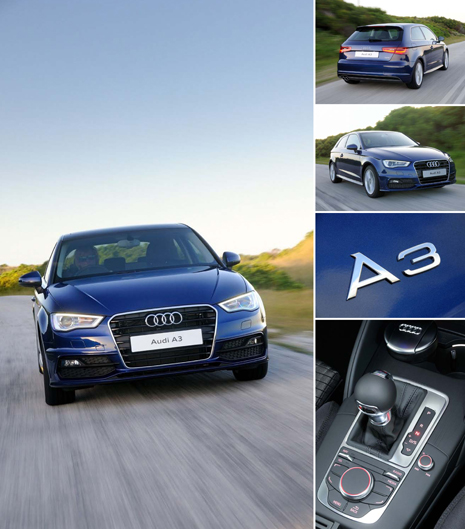
The new Audi A3 has always been a sales stalwart for the Four Rings, offering as it does a Golf-sized package with a healthy dose of premium appeal.
In the metal, this all-new A3 looks a lot sharper than the images suggest. Its shape is keenly drawn across its frame, expressing a contemporary edge and a pared-down elegance.
There’s a stronger emphasis on flair and aerodynamics, and the extended wheelbase, the well-contained overhangs and the wider stance all contribute to a hatch that looks eager and willing.
Audi cabins have become the premium segment benchmark, and the A3 lives up that reputation. Intuitive ergonomics, tactilely appealing finishes and an overriding sense of well-being permeate a well-sorted, instantly likeable interior.
Superb seats and a fully adjustable steering wheel allow just the right driving position. For a three-door, there’s a refreshing sense of air and space, even if entry and exit from the rear bench seat remains inconvenient.
For now, the all-turbo engine line-up includes two TFSI petrols with capacities of 1.4 and 1.8 litres, and a 1.6 TDI turbodiesel. An entry-level 1.2 TFSI, and a muscular 2.0 TDI, will follow in 2013.
Substantial weight reduction and improved efficiency benefit both performance and fuel economy across the range. It’s the combination of lower mass, that new chassis, and the zest of the turbo engines that creates the A3 magic.
Even the modest 1.4-litre, 90 kW four-cylinder revs with the linear, insistent power delivery typical of the best small turbo engines. There’s no lag to speak of, and the urge flows effortlessly, managed by a slick-shifting gearbox.
The steering loads up nicely, proving that electrically-assisted helms can provide authentic heft and feedback. But the real revelation is the ride quality and the handling.
In town, the A3 absorbs bumps and dips with composed ease. Pushed hard through a set of twisties, the ride remains smooth, and there’s hardly any lean to speak off. Overall compliance is downright impressive, while that vital bum-in-seat feedback is unequivocal.
So, the A3 manages a delicate balance of poise, comfort and control that makes for memorable, truly grin-inducing driving.
That the combination of small-capacity turbo engine and reduced mass also translates into thriftier fuel consumption (even in real-world conditions) adds a further string to the impressive A3 bow.
|
Audi A3 1.4 TFSI Manual
|
BMW M135i: Hottest hatch
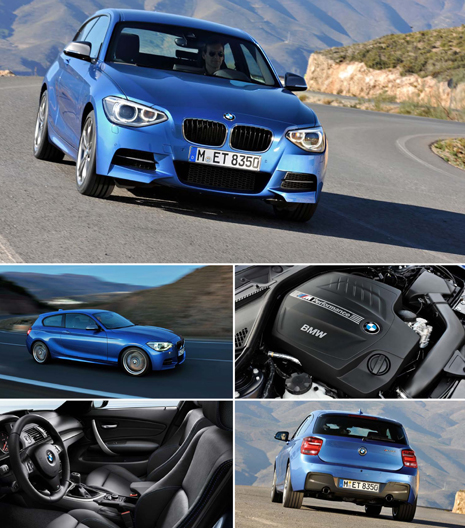
BMW’s new M135i three-door hatchback is not the older, wilder 1-Series M Coupé reincarnated, but it does offer some of that special M magic.
Having grown in every direction, except in height, this latest 1-Series hatch has lost some of the original’s visual aggression. But it gains extra muscle in M135i guise, thanks to a bolder front with hungrier air intakes, extended sills, and a deeper rear apron.
The blunt, pugnacious nose looks more bull terrier than greyhound, while the rear is more sculpted, more balanced, and garnished with a gloss-black apron hosting large-bore exhaust tailpipes.
Inside, the form-hugging seats are electrically adjustable to allow an optimal driving position for all shapes and sizes. The finishes are classy without resorting to ostentation, and the switchgear and controls are intuitively located.
The ergonomics favour close interaction between car and driver, and the longer wheelbase means there’s more space front and rear, while the boot offers a reasonable 360-litre luggage capacity.
Under the bonnet, BMW’s twin-scroll turbocharged, straight-six engine is one of the best in the business. The lusty three-litre delivers 235kW of muscle and 450Nm of torque, harnessed by an eight-speed auto gearbox, and delivered to the rear wheels in the best BMW tradition.
In straight-line terms, the M135i is rapid, even by thoroughbred sports car standards. Overtaking is only a gentle squeeze of the throttle away, while booting it will elicit the kind of instant, startling response that can punish the unwary with a painful case of whiplash.
The chassis comes equipped with some M-derived trickery, including an M-tweaked suspension that tautens up the hatch’s road manners. Initially, the steering feels overassisted, but at speed, things get a lot better: there’s real weight and feel on offer.
A selection of driving modes ranges from Eco Pro (which tries to turn the M135i into a fuel miser) and the default Comfort setting, to the more pertinent Sport and Sport Plus modes. Both of the latter sharpen overall responses, but in Sport Plus mode, the electronic nanny relaxes her grasp just enough to allow some mild oversteer when giving it stick.
However, the M135i lacks the ultimate edge of a real M-car like the 1M Coupé. The safety margins are broad, and the hatch remains more forgiving than arresting.
The BMW M135i delivers storming performance, engaging road manners and a talent for agility that makes spending time behind the wheel a pleasure. It’s not a real, dyed-in-the-wool M-car – but it’s the best of its genre.
|
BMW M135i AT
|
FIAT ABARTH ESSEESSE: Double Espresso
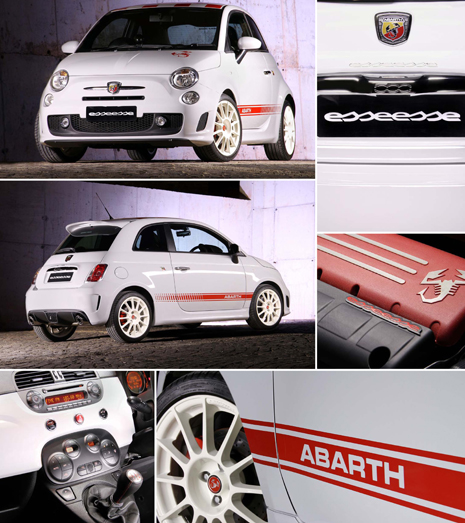
Targeting fashionistas rather than families, the modern-day Fiat 500 is a retro-laced pastiche of the original. Sales were slow to start off with in SA, but after some price and spec adjustments, the little Fiat is now a regular on local roads.
For those seeking something faster and smarter than the vanilla 500, the Abarth version is a tempting prospect. Abarth is to Fiat what M is to BMW, and AMG to Mercedes-Benz. In other words, the 500 Abarth is a performance version of the standard model.
But as it turns out, even the Abarth comes in a choice of dynamic flavours. If the Abarth is the equivalent of a strong espresso, the Abarth EsseEsse is a double Espresso with a dash of grappa.
The Abarth gets a racy body kit, an extended nose to make space for a more powerful 1400 turbo engine, and a lower stance. But to identify the EsseEsse version is a lot harder, because it shares the standard Abarth’s exterior execution, although those with an eye for detail may spot the uprated brake discs, and the even lower ride height.
The EsseEsse interior is also pure Abarth: boldly bolstered bucket seats, a full array of instruments, and a long list of standard features. But nothing here alerts you to the fact that this is an EsseEsse.
The real focus of the EsseEsse is on performance. The engine is still a 1.4-litre turbo unit, but power increases from 99kW to 118kW, while the torque peak jumps from 206 to 230Nm.
While the basic engine remains the same, the remapped electronics and extra turbo boost account for its elevated performance. Fortunately, the bigger brakes and new suspension bits ensure that the Abarth can cope with the extra muscle.
The 500 Abarth EsseEsse is a real little grin machine. It sounds gruff and purposeful, with a snap/crackle/pop exhaust note that is more race car than road commuter. The short wheelbase translates into lively handling, but there’s a surprising amount of grip.
A new handling package includes new dampers, stiffer springs, and a reduced ride height, which is the key to the little Fiat’s surprising composure.
In straight-line terms, the EsseEsse rockets from rest to 100km/h in a brisk 7.4sec, while it’s capable of a 211km/h top speed. In practice, the little Italian feels even quicker.
At R267,000 the asking price sounds steep. But in fun-per-rand terms, this flagship Abarth earns enough grins to make the purchase a tempting one.
|
Fiat 500 Abarth EsseEsse
|
PEUGEOT 208: A big little car
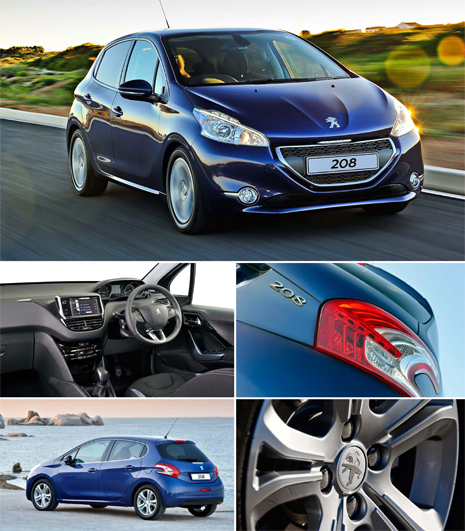
With by far the greatest volume potential in its local line-up, Peugeot’s new 208 hatchback could become an important ambassador for the brand – even in this highly competitive sector.
It certainly has presence. The styling creates initial impressions of robustness and sporty appeal, using sculpted lines and finely honed details to enhance the hatchback silhouette.
The 208’s profile strengthens the impression of aerodynamic efficiency, thanks to a sloping roofline, sculpted flanks and smoothly accentuated haunches. Compared to its 207 predecessor, there’s more visual substance, too.
Most of all, though, the 208 is unmistakably Peugeot. There’s just enough character to elicit admiration, without straying into idiosyncratic territory, while also creating a sense of premium execution.
That sense of premium quality extends to an interior that is unexpectedly innovative. Settle into the bolstered, comfortable driver’s seat, and you’ll notice how the small steering wheel accentuates the raised instrument cluster behind it.
Instead of framing the dials, the steering wheel is set lower, so that the circular instruments for speed and rev count are in an unobstructed line of view. A touch-screen display allows user-friendly access to the car’s entertainment and telephony systems.
Accommodation is roomy by subcompact standards, and while rugby forwards will find the rear bench seat less than comfortable, normal mortals will fit in easily enough. The boot is average.
The 208 range offers a choice of two engines, both combined with a five-speed manual gearbox. The top-end Allure’s powertrain employs a 1.6-litre four-cylinder engine rated at 88 kW and 160 Nm.
There’s also a new-generation three-cylinder engine, offering 60 kW and 118 Nm from its 1.2-litre capacity. It’s the more innovative of the two and also the most frugal, with a miserly combined-cycle fuel consumption of 4.5 litres/100 km, while CO2 emissions come to just 104 g/km. The 1.6-litre achieves 5.8 litres/100 km and 138g of CO2.
The engines enjoy being revved, and the gear ratios find a decent compromise between response and cruising capability. For me, however, it’s the chassis that shines brightest here.
There’s a pleasing plushness to the ride that adds more points to the comfort score book, but without robbing the car of an inherent agility. Indeed, the harder you push the 208, the better it gets.
It enjoys being driven with gusto, and shares that joy with its pilot. It really is fun to drive.
As a package, the 208 surprises and convinces, while addressing the key elements that determine buyer appeal in the small car segment. It links designer looks to a superbly executed interior, innovative ergonomics, a lively but frugal pair of drivetrains, and lots of dynamic appeal.
|
Peugeot 208 1.6 Allure
|
TOYOTA 86: A classic in the making
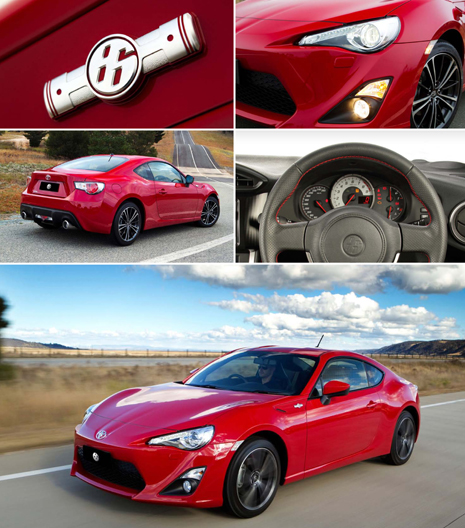
In the 21st Century context, Toyota’s passenger car line-up has lacked a true hero car. The Japanese auto maker desperately needed something that would put a spring in the brand’s step.
The 86 is that car: a trimmed-down, purist 2+2 sports coupé that focuses its attention on driver appeal rather than outright muscle, while also keeping affordability and value in the mix. It’s a task easier said than done.
The coupé’s proportions link a swooping bonnet to a muscle-bound rump, with flared wheel arches and scalloped sides adding further visual interest. The shape is generic rather than bespoke, relying on the execution of the details and finishes for both brand identity and ultimate appeal.
Under the bonnet, the flat-four, 2.0-litre ‘boxer’ engine is the work of Subaru, which also produces its own version of the 86. Maximum output from the normally aspirated unit is 147kW, linked to a torque maximum of 205Nm. The Toyota’s kerb mass of just 1,260kg still allows a useful 118kW/ton power-to-weight ratio.
More importantly, the engine’s peaky character compels full use of the six-speed manual gearbox – and as it turns out, the close-ratio ‘box is one of the 86’s greatest assets, because it is an absolute blast to use.
Thus, engine and gearbox conspire to provide Toyota’s new driving machine with just the right motive urge.
Wide-opening doors allow easy access to a pair of low-mounted, emphatically bolstered bucket seats, trimmed in a mix of cloth and leather. The driver’s view of the deeply recessed instrument dials is framed by a simple, three-spoke steering wheel.
The 86 is truly great to drive, because it gets the one thing right so many wannabe sports cars (even many really expensive ones) struggle with: steering response.
Despite its electric assistance, the steering feels meaty and progressive, with plenty of heft. Turn-in is on the keen side of crisp, so that the initial transition feels almost too sharp, especially in really fast sweeps.
The 86 is content to stick to the chosen line, but in the tight, inducing some tail-wide oversteer isn’t difficult. Most of all, however, it’s the close dialogue between the 86 and its pilot that commands the real respect.
This Toyota has an almost uncanny ability to communicate its intentions, allowing the driver to respond pre-emptively and precisely to the car’s feedback.
The 86 is by no means fast by sports car standards, but what it lacks in straight-line brio, it makes up for with the kind of ride and handling many an exotic machine simply cannot emulate.
With the 86, Toyota proves that power is not the only requirement for sports car appeal, and that chassis and steering are the true parameters distinguishing a real driving coupé from mere muscle machines.
The result? A classic in the making.
|
Toyota 86 2.0 High Manual
|















 Become an Insider
Become an Insider